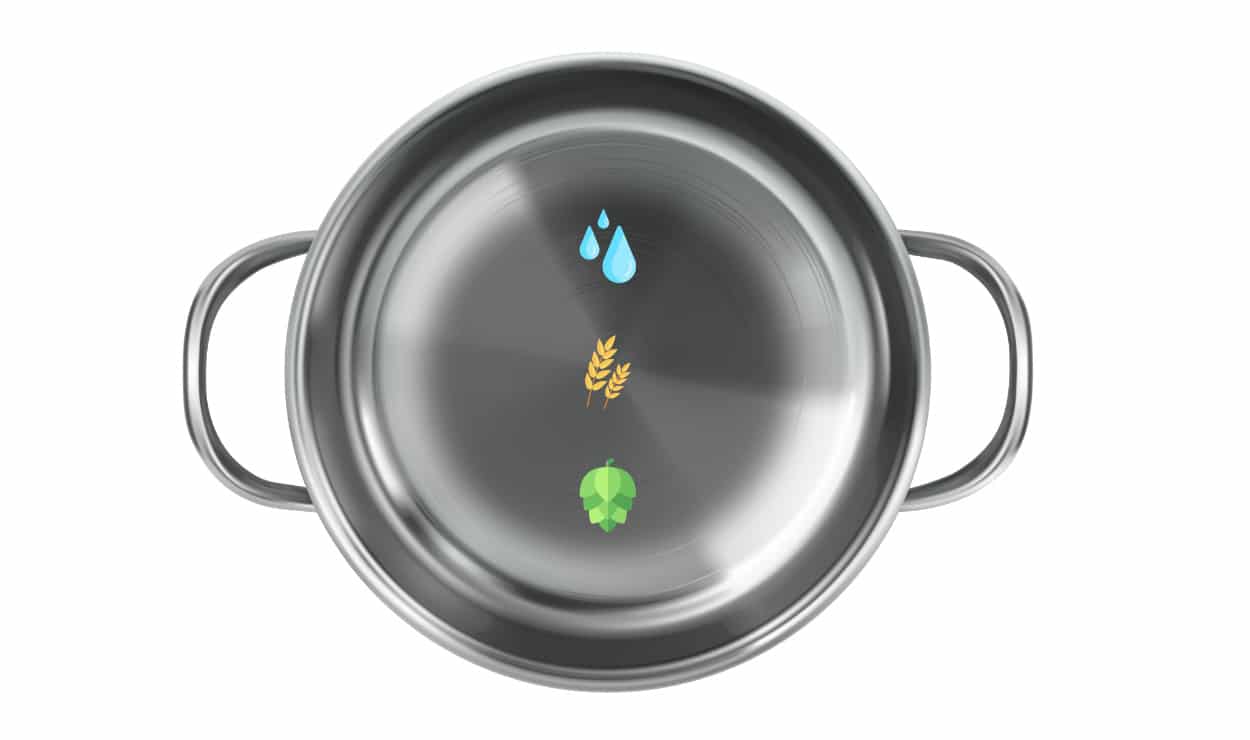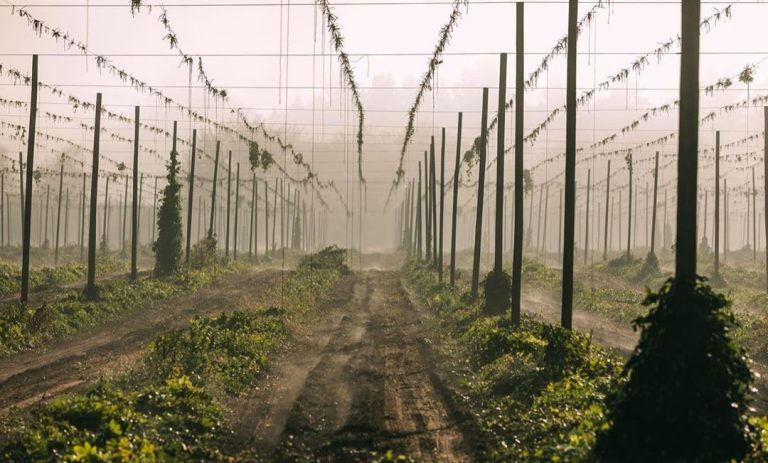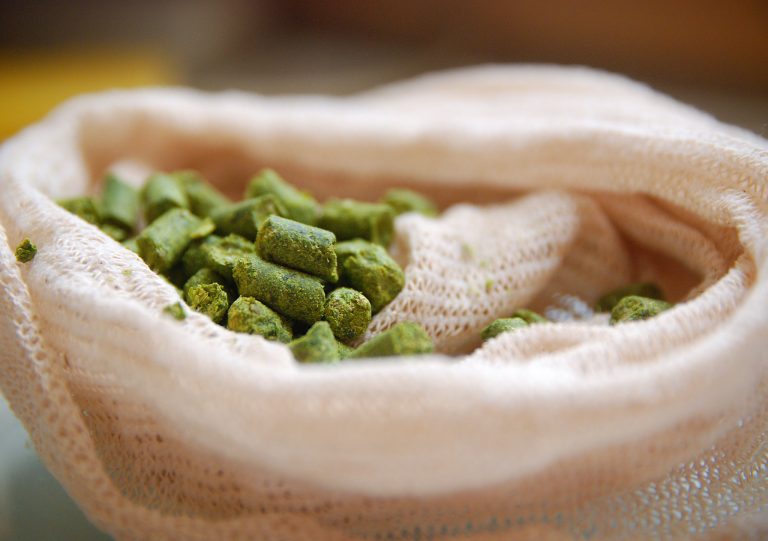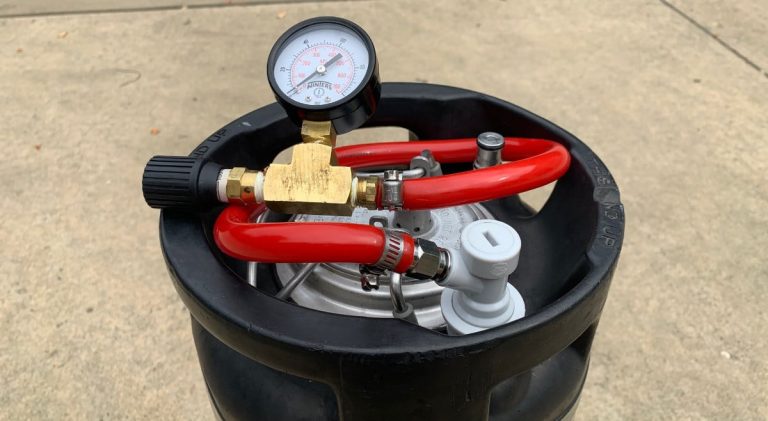Which Size Brew Kettle Should You Get?
Correctly sizing a brew kettle can be a bit confusing for those doing traditional all grain or BIAB brewing. Typically, home brewers will start small – either with a kit or with second-hand equipment.
Once home brewing becomes a hobby that you can’t shake, then the next step is usually to look into upgrades.
Some upgrades are meant to transition your brewing operations into a more professional setup, but most of us simply want to make our brew days more efficient with fewer headaches.
Identifying the Problem
The first major upgrade I made with my setup was ditching the glass carboy for the stainless steel Delta FermTank. This was a necessary upgrade, however I was still having problems with efficiency. My brewhouse efficiency with my BIAB setup sometimes dropped south of 60%, which is horrendous. I knew I needed to make a change, and I narrowed down the problem with my 8 gallon brew kettle. I started using this pot as my kettle because I already had it for cooking/frying… so it was originally repurposed to save on the extra $100-$150 it would take to buy a separate one.
This pot no longer works for me. Since I’ve dragged my feet on switching to a full electric BIAB setup, I need to get a new brew kettle. The poor efficiency is killing my volumes (I’m typically between 1/2 and 1 gallon less than expected) and my starting gravity (SG) never quite reaches to where it needs to be.
Brew Kettle Options
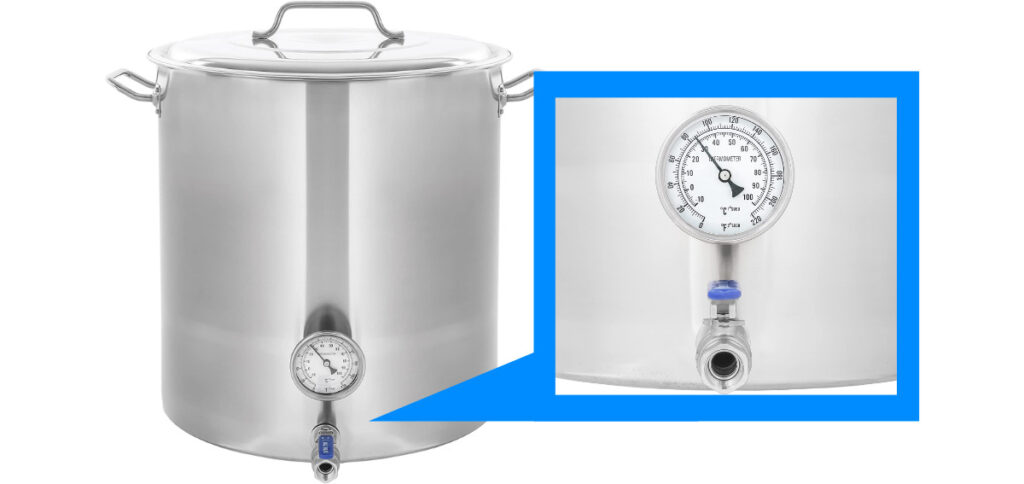
Brew kettles are not a complex piece of equipment. Most kettles either have nothing extra, or they come with a spigot and/or thermometer. Those last two bells-and-whistles will make life much easier, but are they worth it? They can always be added later if you are handy, so it’s not like they are make-or-break options at this stage of the game.
It’s preferred to have a heavy bottomed pot when brewing beer. The extra heft helps retain the heat and won’t flex or begin to warp once filled with boiling hot wort.
Brew Kettle Sizes
I’ve found that many brew kettles are labeled online with quarts instead of gallons. This posed a small problem for me because I brew my batches in gallon increments. Here is a quick conversion table that should help you make sense of the available sizes.
| Quarts | Gallons |
|---|---|
| 20 | 5 |
| 30 | 7.5 |
| 32 | 8 |
| 40 | 10 |
| 44 | 11 |
| 60 | 15 |
| 80 | 20 |
| 100 | 25 |
| 120 | 30 |
| 160 | 40 |
| 180 | 45 |
The Goldilocks Size
I brew beer in the 5-6.5 gallon range, and I’ve been barely getting by with my 8 gallon (32 quart) pot for a couple of years. In order to use this size pot, my process has had to be modified a bit for BIAB.
In my old pot, I’d heat up 6 gallons of water, then drop the BIAB bag in to create the wort. With 12 pounds of grains, my old pot’s volume would be virtually at 100%. The slightest movement will usually cause overflow. After the hour of mashing, I pull it out and sparge with about 2.5 gallons of water. This rinsing allows me to not only wash my grains, but get back up to full volume again.
This is where I’ve determined I’m losing most of my efficiency. Not only can I not mash with the full volume of water, but I also am constantly afraid of overflowing my pot. It’s narrower than a 10- or 15-gallon pot, which means the bag doesn’t have much room to drain without pouring some wort down the side of the kettle, either.
In my opinion, a 10 gallon pot would still give me many of the same problems. My Brewer’s Friend calculator says I need about 9.5 gallons of water per 6.5 gallon batch of beer. This will make the 10-gallon pot already too small once I add in the 10-15 pounds of grain.
It took a while to get here, but I feel that a 15 gallon (60 quart) kettle is exactly what is needed to brew a 5-6.5 gallon batch.
Choosing the Pot
The first decision is to choose if you want a pot with a spigot or without. I feel your best bet is to buy a pot with all the attachments instead of retrofitting a plain one. Adding an aftermarket thermowell and spigot will cost you about $35 from Amazon, and you have to do all the measuring and drilling yourself.
However, Concord has a pair of brew kettles – one with, one without the thermometer/spigot combo. The brew kettle with only cost an extra $15. It was actually cheaper to buy it pre-assembled than hack together some DIY stuff.
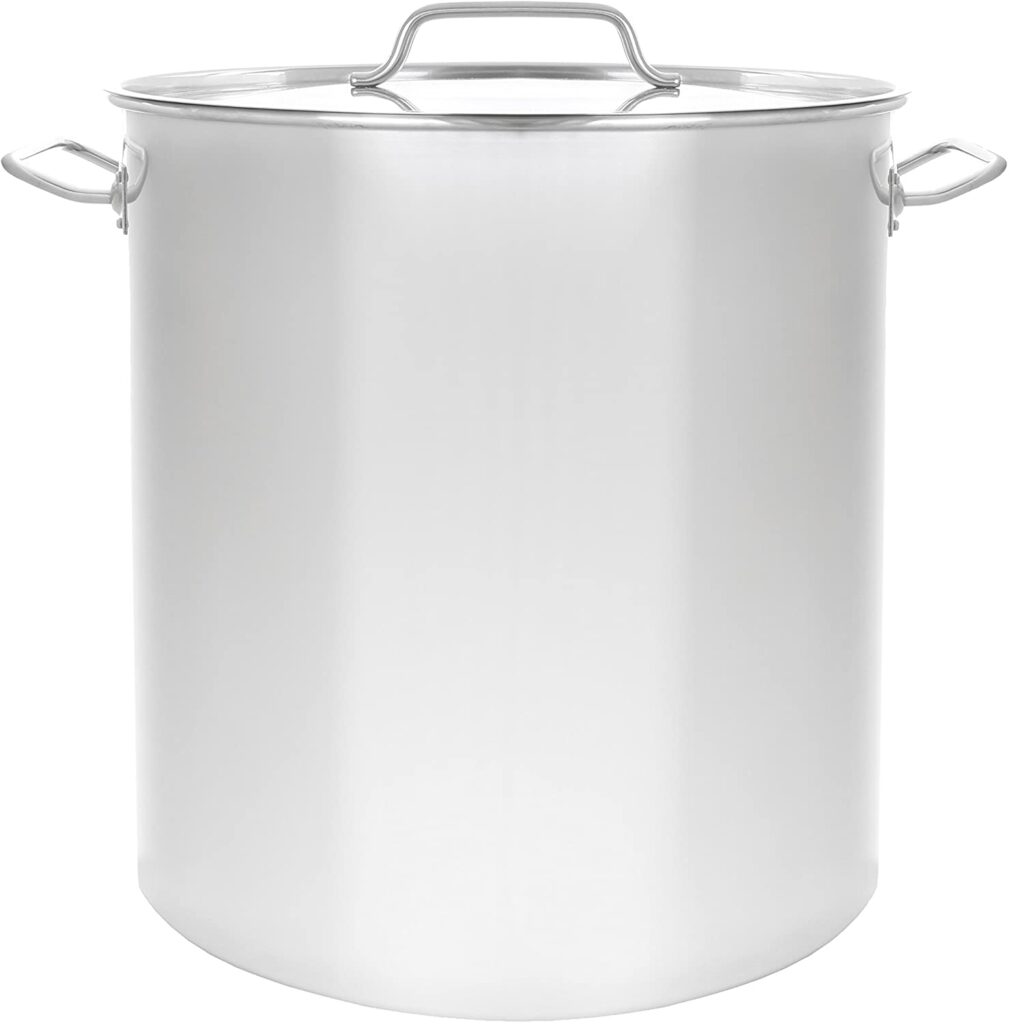
CONCORD Stainless Steel Home Brew Kettle Stock Pot
- 60 quart (15 gallon)
- 17″ wide x 16.5″ high
- 1.0mm thick walls
- Commercial Grade
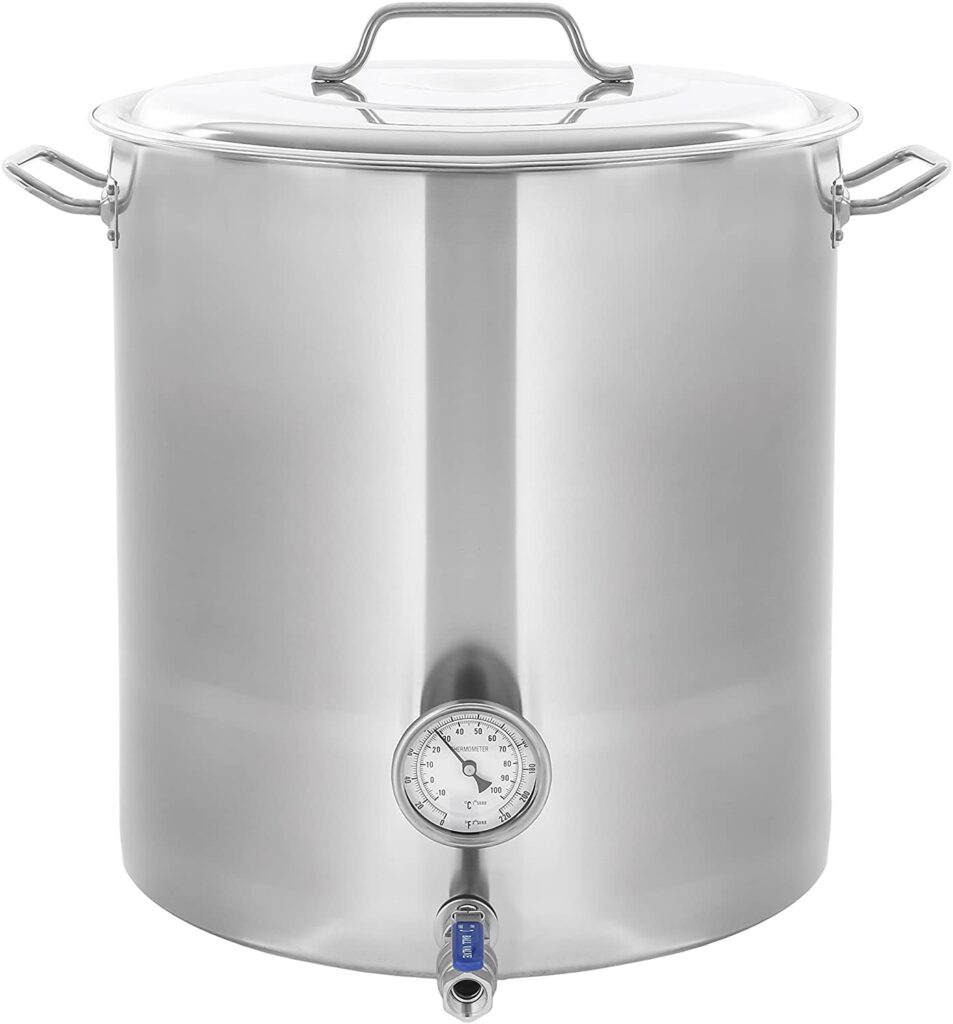
CONCORD Stainless Steel Home Brew Kettle Stock Pot with Weldless Fittings
- 60 quart (15 gallon)
- 17″ wide x 16.5″ high
- Includes 1/2″ Ball Valve and Thermometer
- Works great with a 1/2″ barb
However, I wasn’t thrilled with the thinness of the Concord kettles. They would have worked in a pinch, and was actually my first choice until I found this GasOne pot. I have smaller GasOne kettles, and found they stand up to very busy use and are made of thick steel. An added bonus was that it was actually the cheapest I could find as well
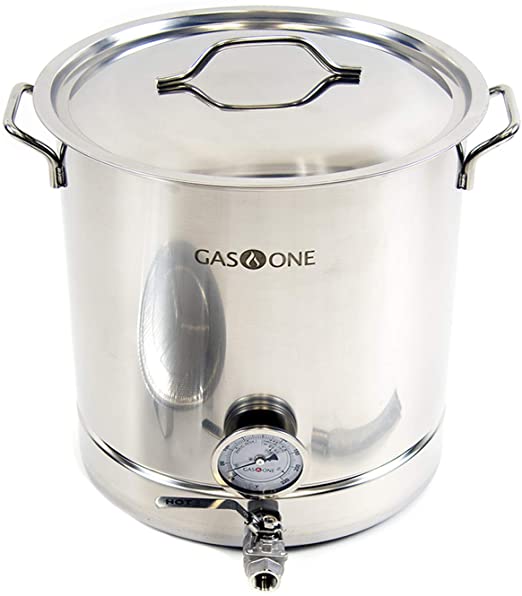
GasOne 16 Gallon Stainless Steel Kettle Pot with Thermometer and Spigot
- 64 quart (16 gallon)
- 304 High quality steel
- Scaled Gallon Markings
- Includes Ball Valve, Spigot and Thermometer
- 16.75″ wide x 19.25″ high
